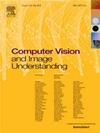A deep reinforcement active learning method for multi-label image classification
IF 4.3
3区 计算机科学
Q2 COMPUTER SCIENCE, ARTIFICIAL INTELLIGENCE
引用次数: 0
Abstract
Active learning is a widely used method for addressing the high cost of sample labeling in deep learning models and has achieved significant success in recent years. However, most existing active learning methods only focus on single-label image classification and have limited application in the context of multi-label images. To address this issue, we propose a novel, multi-label active learning approach based on a reinforcement learning strategy. The proposed approach introduces a reinforcement active learning framework that accounts for the expected error reduction in multi-label images, making it adaptable to multi-label classification models. Additionally, we develop a multi-label reinforcement active learning module (MLRAL), which employs an actor-critic strategy and proximal policy optimization algorithm (PPO). Our state and reward functions consider multi-label correlations to accurately evaluate the potential impact of unlabeled samples on the current model state. We conduct experiments on various multi-label image classification tasks, including the VOC 2007, MS-COCO, NUS-WIDE and ODIR. We also compare our method with multiple classification models, and experimental results show that our method outperforms existing approaches on various tasks, demonstrating the superiority and effectiveness of the proposed method.
一种用于多标签图像分类的深度强化主动学习方法
主动学习是一种广泛使用的方法,用于解决深度学习模型中样本标记的高成本问题,近年来取得了显著的成功。然而,现有的大多数主动学习方法只关注单标签图像的分类,在多标签图像环境中的应用有限。为了解决这个问题,我们提出了一种基于强化学习策略的新型多标签主动学习方法。提出的方法引入了一个强化主动学习框架,该框架考虑了多标签图像的预期误差减少,使其适应于多标签分类模型。此外,我们开发了一个多标签强化主动学习模块(MLRAL),该模块采用了行为者批评策略和近端策略优化算法(PPO)。我们的状态和奖励函数考虑了多标签相关性,以准确评估未标记样本对当前模型状态的潜在影响。我们对各种多标签图像分类任务进行了实验,包括VOC 2007、MS-COCO、NUS-WIDE和ODIR。并将该方法与多种分类模型进行了比较,实验结果表明,该方法在各种任务上都优于现有方法,证明了该方法的优越性和有效性。
本文章由计算机程序翻译,如有差异,请以英文原文为准。
求助全文
约1分钟内获得全文
求助全文
来源期刊

Computer Vision and Image Understanding
工程技术-工程:电子与电气
CiteScore
7.80
自引率
4.40%
发文量
112
审稿时长
79 days
期刊介绍:
The central focus of this journal is the computer analysis of pictorial information. Computer Vision and Image Understanding publishes papers covering all aspects of image analysis from the low-level, iconic processes of early vision to the high-level, symbolic processes of recognition and interpretation. A wide range of topics in the image understanding area is covered, including papers offering insights that differ from predominant views.
Research Areas Include:
• Theory
• Early vision
• Data structures and representations
• Shape
• Range
• Motion
• Matching and recognition
• Architecture and languages
• Vision systems
 求助内容:
求助内容: 应助结果提醒方式:
应助结果提醒方式:


